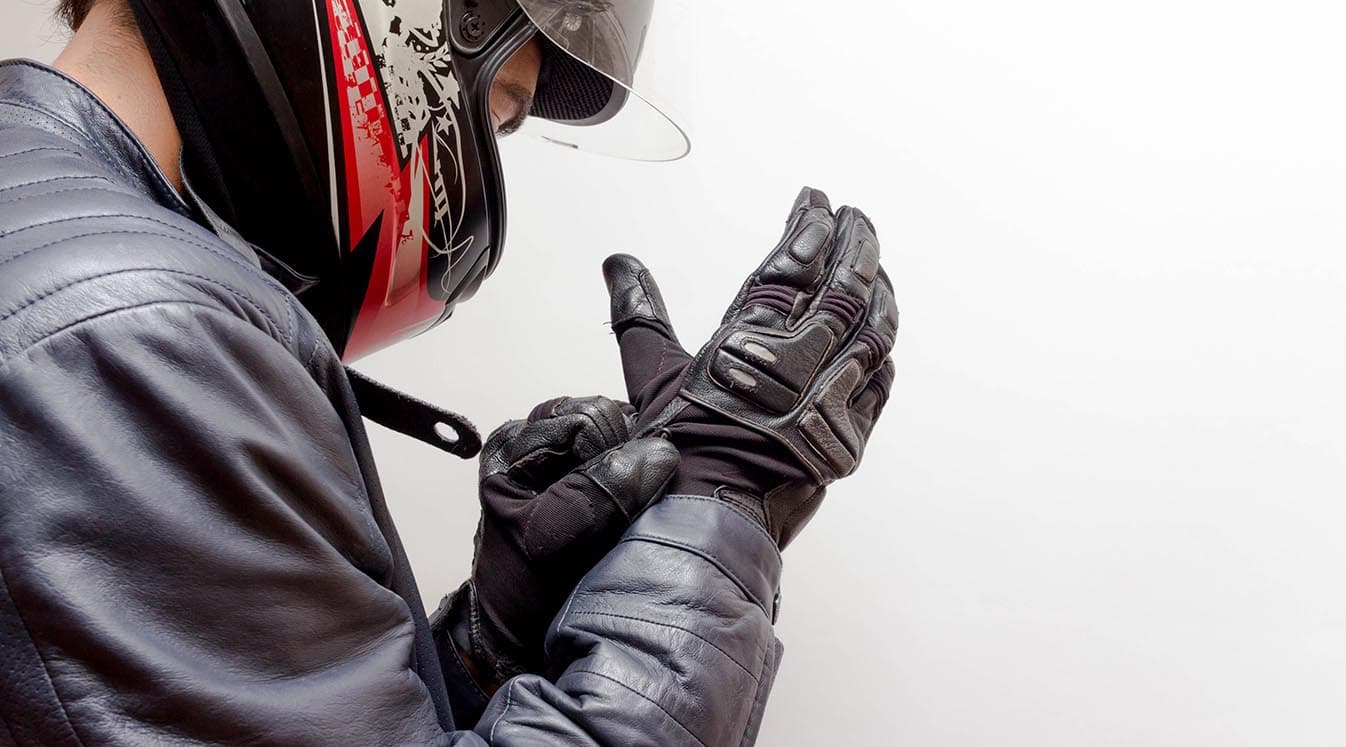
Ready to Ride: The Best Motorcycle Gear for Beginners
Evolution designed the human body to do some amazing things, but coming out of a motorcycle accident unscathed isn’t one of them. Even careful and skillful riders can fall or lose grip when they least expect it, and the body isn’t made to withstand the forces that will hit it when that happens.
Don’t let that scare you away from riding, though, as wearing the right gear can mitigate these risks a lot. However, it does mean that if you’re just getting started on learning to ride a motorcycle, it’s important not to wait to pick up the riding gear you need. When choosing your starting gear, look for these six key pieces and use this guide to help with your decisions.
1. Helmet
If there’s one area where you absolutely shouldn’t skimp, it’s your helmet. The safest and most protective helmets are full-face and modular helmets, which include face and chin protection. Three-quarters and half helmets are better than nothing, but they don’t protect the face or chin, where 45 percent of all motorcycle accident impacts happen. (If you choose a model without a built-in face shield, be sure to at least pick up some riding goggles.)
USDOT approval is the minimum safety standard you should look for on a helmet, but the European ECE 22.05 standard and Snell Foundation standard are much more rigorous and will help you find a more protective helmet. Other features to look for include ventilation, removable liner pads for easy cleaning and a shape that fits well and sits comfortably on your head. Note that it’s never a good idea to buy a used helmet, as you can’t always tell when a helmet has been in a crash that will compromise its ability to protect you.
2. Jacket

Motorcycle jackets come in a huge variety of styles, and both leather and textile jackets can offer good protection. Leather jackets are a classic and are a game-changer when it starts to rain or snow, but textile jackets are often more breathable and versatile.
Look for features like double stitching to improve durability, ventilation features such as mesh lining and a snug (but not overly tight) fit to keep the jacket in place in windy conditions. Many jackets come with built-in armor to protect you in a crash, and others can be upgraded with additional armor. Do some research on brands that motorcyclists trust, as not everything that looks like a motorcycle jacket is actually designed to function as one.
3. Pants
You might look great in your favorite pair of jeans when you’re riding, but they’ll do next to nothing to protect you in a crash. Instead, choose a pair of pants designed specifically for motorcyclists, with armor padding in the knees and ankles to protect you in a crash. Some pants even attach to jackets via zippers or loops to prevent the jacket from riding up in a crash, which can help you avoid the burning pain of road rash.
4. Boots
Riding boots are another must-have for motorcyclists of all skill levels. You want solid support all the way through the leg to help keep your feet and legs straight and stable while riding. Evaluate a pair of boots by twisting them from heel to toe and watching how they react. Any boot that doesn’t maintain its shape won’t protect your feet sufficiently in a crash. You’ll also want non-slip soles to help maintain your grip on any slippery surfaces you might encounter.
5. Gloves
Your hands are among the most vulnerable body parts in a crash after your head, so keep them protected with a good pair of motorcycle gloves. Choose a pair of gloves made from leather or tough synthetic textiles, and make sure to investigate the quality of the stitching. Another good feature to look for is padding on the knuckles and at the wrist-palm junction, as these are the impact points for your hands in many motorcycle crashes.
6. Helmet Intercom System
Riding is often better together, and riding with a more experienced buddy is an awesome way to sharpen your skills. To get the most out of a group ride, it’s a great idea to grab a motorcycle headset like the Cardo PACKTALK BOLD or Cardo FREECOM 2+. These advanced wireless communication systems will keep you in constant contact with your fellow riders and offer hands-free operation so you can keep your eyes on the road and your hands on the bars.

Finding the best motorcycle gear for beginners can be a tricky task, but it’s crucial for your comfort and—more importantly—your safety. If you’re still a little unsure, take along a more experienced biker friend when you go shopping, as they can help guide you in what to look for.
